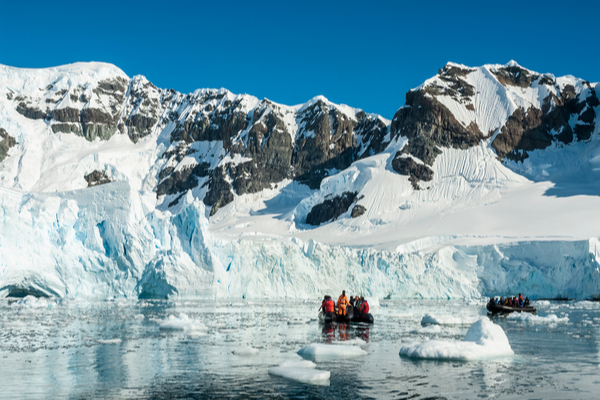Climate feedback loops are cyclical chain reactions that happen when one change triggers further changes, in a process that keeps on repeating itself. Some of these feedback loops drive down warming, but others amplify it.
As CNN reports, according to a new study, these dangerous climate feedback loops are increasing global warming and risk causing a permanent shift away from the Earth’s current climate.
Take Arctic ice, for example. Warming temperatures cause sea ice to melt, revealing the dark ocean water beneath. As dark surfaces absorb more heat than reflective surfaces like ice, the ocean warms and more ice melts.
A group of international scientists from institutions including Oregon State University, Exeter University and the Potsdam Institute for Climate Impact Research in Germany, pored over climate literature to identify 41 climate feedback loops.
Of these, they found that 27 are driving up global temperatures, according to the study published Friday in the scientific journal One Earth, while just seven are helping to slow the pace of climate crisis.
William Ripple, Professor of Ecology at Oregon State University and a lead author on the study, told CNN that forest die-off, smoldering peatlands and thawing permafrost were particularly worrisome. “These feedbacks may be large and are difficult to accurately quantify,” Ripple told CNN.
The researchers were surprised by the large number of amplifying climate feedback loops they found, he added. “To the best of our knowledge, this is the most extensive list available of climate feedback loops, and not all of them are fully considered in climate models,” Christopher Wolf, a postdoctoral scholar at Oregon State University and the study’s other lead author, said in a statement.
Climate feedback loops can also indirectly affect each other, according to the study, creating a complex web of interconnected changes that can accelerate the impacts of the climate crisis.
For example, planet-warming pollution released by thawing permafrost – the frozen layer of soil that blankets the Arctic and other parts of the planet’s far north – increases global temperatures, which in turn helps create the hotter, drier conditions that make wildfires spread faster and burn more intensely. Wildfires release planet-heating pollution, further raising temperatures, and so on.
These interconnections “make it challenging to predict the precise impacts of climate change,” Ripple said.
There is a risk that some of these feedback loops could trigger climate tipping points. For example, feedback loops accelerating Arctic ice melt could ultimately cause the Greenland ice sheet to collapse. “In the worst case, if amplifying feedbacks are strong enough, the result is likely tragic climate change that’s moved beyond anything humans can control,” Ripple said in a statement.
The study also found seven “dampening” feedback loops, which help stabilize the climate system. These included the ability of land and oceans to absorb planet-heating carbon emissions. “It’s important to “try to get a handle on the strength of all these feedbacks,” Tim Lenton, Chair in Climate Change and Earth System Science at the University of Exeter and one of the co-authors, told CNN, to better understand how they work within the complex climate system.
“We, already at 1.5 [degrees Celsius], are likely to cross multiple tipping points, causing feedback loops that would make our options for a safe climate future even fewer,” Johan Rockström, Director of the Potsdam institute and a co-author of the study, told CNN.
The authors called for “immediate and massive” reductions in planet-warming pollution, as well as increased research into climate feedback loops. “It’s too late to fully prevent the pain of climate change, but if we take meaningful steps soon while prioritizing human basic needs and social justice, it could still be possible to limit the harm,” Ripple said.
—
Photo Credit: Foto 4440 / Shutterstock.com
